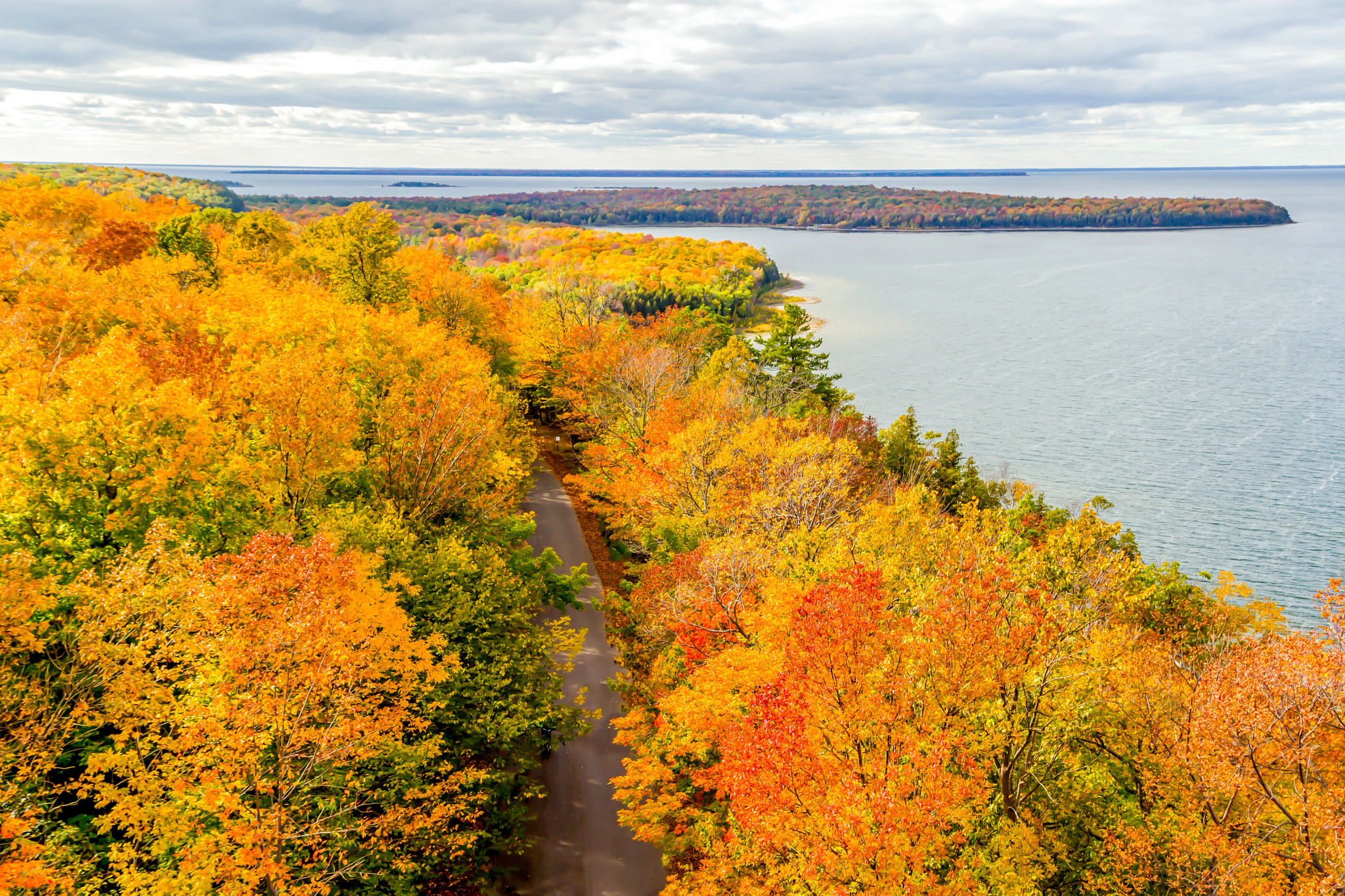Contact: DNR Office of Communications
DNRPress@wisconsin.gov
Find Your Adventure: Explore Wisconsin’s Amazing Fall Foliage
 Wisconsin state forests, parks and trails offer excellent vantage points to view fall colors as shown in this photo taken in Door County.
Photo credit: iStock/MONISHA MALLI SRIDHARAN
Wisconsin state forests, parks and trails offer excellent vantage points to view fall colors as shown in this photo taken in Door County.
Photo credit: iStock/MONISHA MALLI SRIDHARAN
ASHLAND, Wis. – Autumn in Wisconsin is all about the color. The beauty is breathtaking, and you’ve got to see it to believe it. With over 6 million acres of public lands, 49 state parks, 15 state forests, 44 state biking trails plus hundreds of lakes and rivers to explore, Wisconsin has a fall leaf-peeping spot for everyone.
The state’s combination of tree species and climate produce vivid fall foliage, leaving residents and visitors alike looking forward to the annual fall color show. From urban parks to colorful country roads, Wisconsin is packed with color-spotting opportunities throughout the fall season. Check out these 11 scenic drives to experience fall from Travel Wisconsin.
Color changes typically occur in far northern Wisconsin during the last week of September and first week of October, with color peaking during mid-October in central Wisconsin and the latter half of October in southern Wisconsin. Timing of the color change varies by species and weather conditions.
"To have the most brilliant and vibrant fall color display, a series of fall days filled with bright sunshine and cool, but frost-free, evenings are ideal," said Colleen Matula, DNR Forest Ecologist/Silviculturist. “Cooler nighttime temperatures tend to amplify the brightness of reds and purple in leaves, while warmer nights will mute this color change.”
Discover the fall colors in Wisconsin with the official Travel Wisconsin Fall Color Report.
Warmer temperatures, especially in the evening, tend to delay fall color because the trees are not getting the signal that fall has arrived. Fall color predictions by the National Oceanic and Atmospheric Administration (NOAA) are based on mathematical algorithms that factor in historical leaf peak, temperatures, precipitation, leaf volume, health and day length.
While forests in central and Northeast Wisconsin are right on target, counties in Northwest Wisconsin and the far southern part of the state are encountering drought conditions that may impact fall color in those parts of the state.
The intensity and duration of fall color is affected by spring and summer growing conditions. Severe to abnormal drought in the growing season usually makes the tree leaves change color earlier and the color lasts for a shorter period. In some cases, trees may skip the color change altogether with leaves turning brown before falling.
For more information on the science of fall colors, visit this DNR website.

